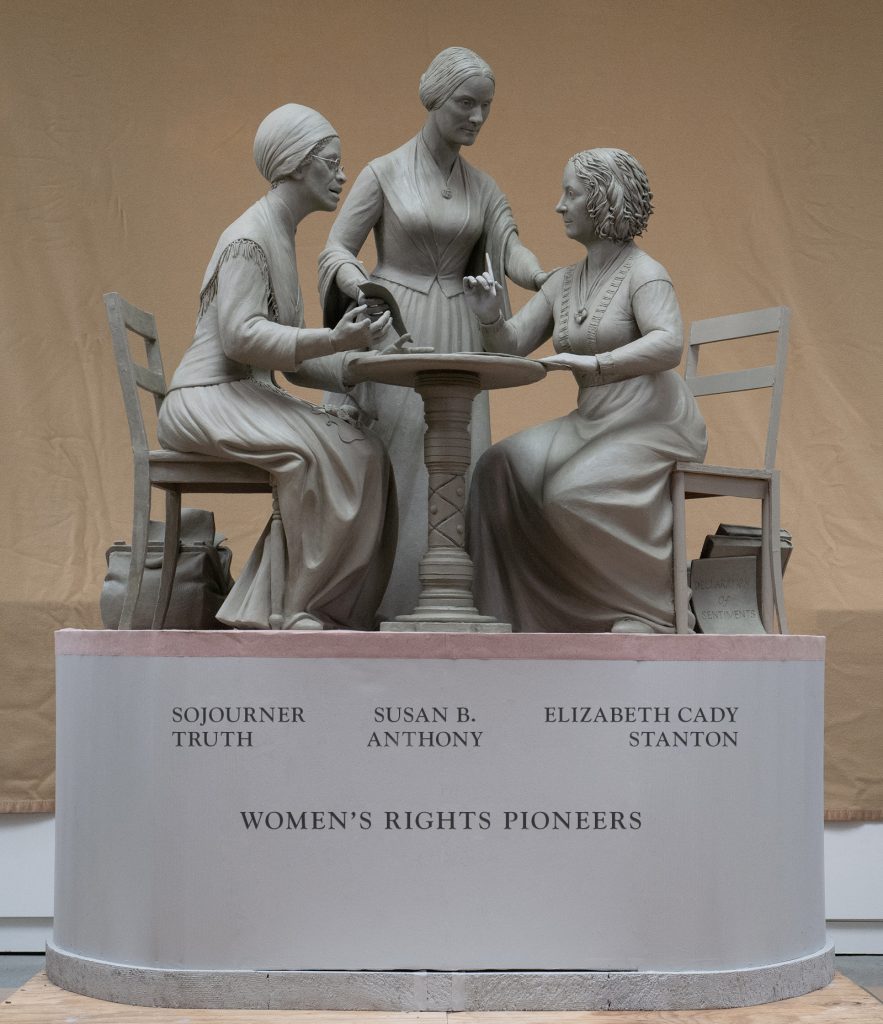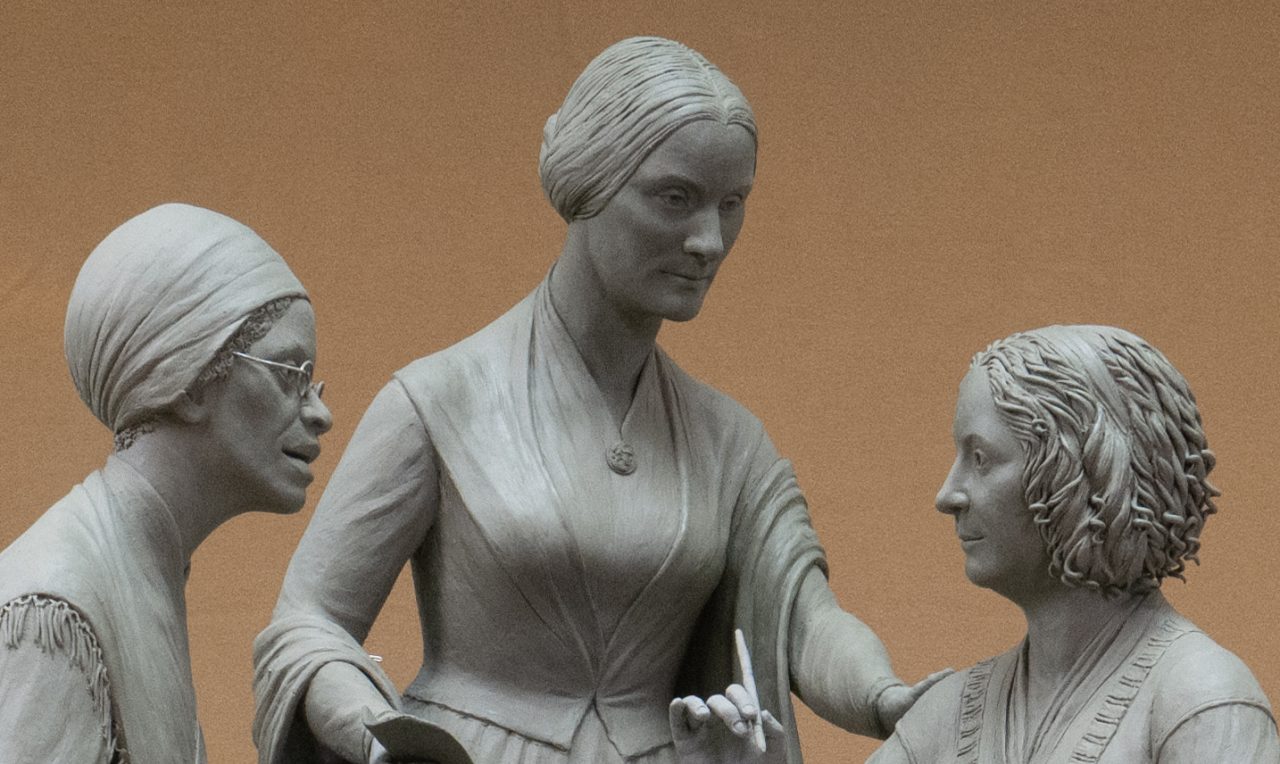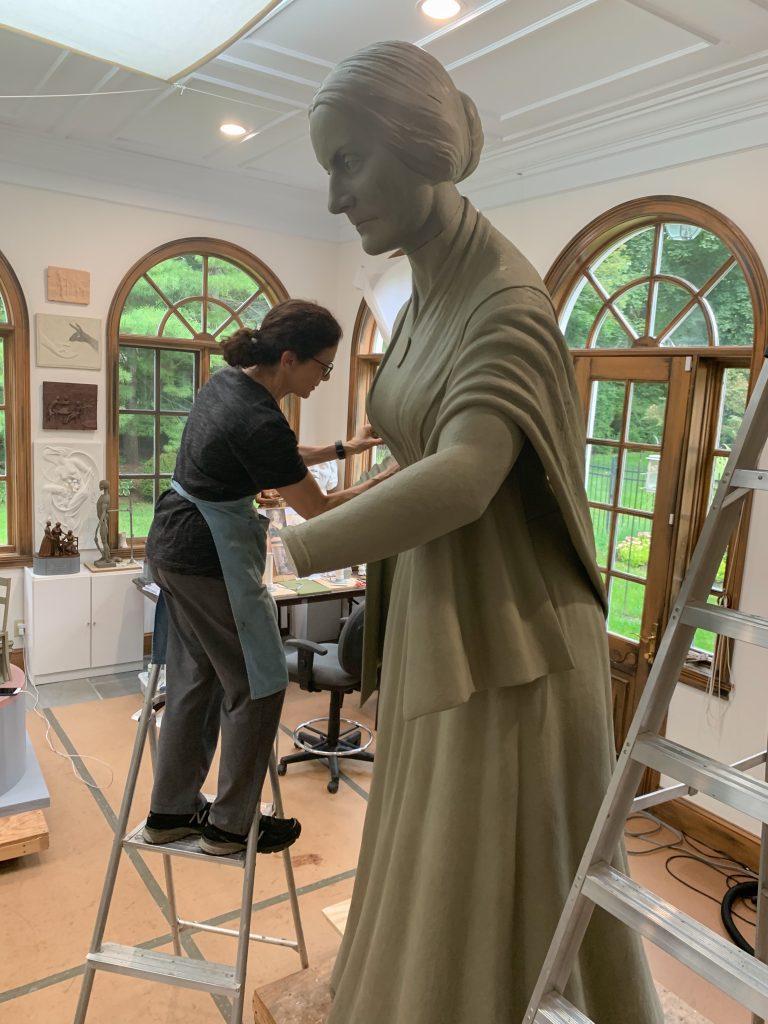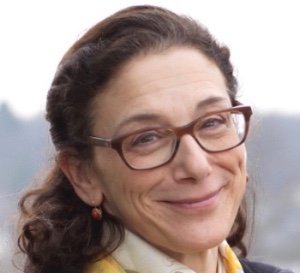The Design of Our Women’s Rights Pioneers Monument Featuring Sojourner Truth, Susan B. Anthony, And Elizabeth Cady Stanton

Artist’s Statement from Meredith Bergmann
As an artist working in the public realm, I approach this project with an eye on integrating four compatible but different concerns: the people and history to be commemorated, the site, our contemporary needs, and my own interest in creating the artwork.
My own interest is the easiest to describe: I have worked for decades for social justice and historical redress through my art, using my artist’s imagination to create empathic representations of diverse, inspiring people.
The historical record is complex, as are the people I’m portraying. Professor Margaret Washington, historian and author of Sojourner Truth’s America, (University of Illinois Press, IL, 2011) summarized the complexity beautifully when she wrote to me: “There ought to be a way to depict that; to capture the sisterhood as well as differences.”
Central Park is visited by over 42 million people each year. I’ve used some of the vocabulary of the existing statuary near our site on Literary Walk so that this monument will speak to and harmoniously coexist with the Park’s art collection. In this design, as throughout the Park, recognizable bronze figures sit and stand on a granite pedestal with inscriptions. Within this structure, my design also departs from the other monuments in ways that are appropriate to the entry of women into a sphere from which they were previously excluded. Three figures (instead of one) share a pedestal and relate to each other. They are not dreaming, but working. They are an allegory of sisterhood, cooperation and activism but they are not just an allegory, as so many sculptures of women are. In this way I am making a contemporary work that will, as required, harmonize with its 19th Century surroundings.
This requires not just research but imagination. Nick Capasso, as curator of the DeCordova Museum and Sculpture Park, has written: “As a contemporary artist, Meredith Bergmann relies on her knowledge of history and art history, as well as her considerable talent as a figurative sculptor, to forge enriching links between the past and the concerns of the present. Her success as a creator of public art stems from her ability to make free, imaginative use of the forms and symbols of traditional sculpture to address, in complex yet accessible ways, the multi-layered personal and societal concerns of modern life.”

Our contemporary needs are not simple either. We need statues of real women in Central Park. We need to be true to our new understanding of the historical record which does not shrink from calling out injustice and oppression, or minimize the contributions of people of color or the harms done to people of color. We need to correct the injustice done to women of all races and their invisibility in public spaces. We need to commemorate an important landmark in the so-far-endless struggle for justice in America without forgetting that had America been true to its founding principles, movements for equal rights would never have been necessary. None of the women depicted on the monument lived to see the ratification of the 19th Amendment, let alone the Voting Rights Act of 1965, whose work is still incomplete. But as we struggle towards greater justice, we need and deserve a monument commemorating some of the important work that has come before us.
Sojourner Truth is speaking, Susan B. Anthony is organizing, and Elizabeth Cady Stanton is writing, three essential elements of activism. Truth sits with Stanton at a small table, perhaps on the occasion of a conference for the abolition of slavery or for women’s rights or for both, as these movements were, for much of their history, joined in activism. Anthony is standing behind the table with her traveling bag, bringing documentation of injustices to help focus the discussion. The women might be meeting in Stanton’s home, where both Sojourner Truth and Susan B. Anthony were guests. The monument represents an indoor space because much of women’s political work originated in the home– in the 19thCentury women were not commonly seen in the public sphere.
Statues serve many purposes in addition to portraying a likeness of a person, and the best portraits evoke a whole life and are not fixed in a particular moment. Sculptural portraits can do this well because they are made as composites, formed from many impressions, and because they are designed to be seen from many angles at different times of day in changing light. I never copy a photograph but photographs inspire me to use my imagination to tell a more encompassing story.
My portraits of these women are complex, showing their attention to and respect for each other and, through their body language and subtle aspects of their facial expressions, some of the tensions among them. Their gestures are significant but not definitive. My intention is that viewers will decide for themselves what Sojourner Truth is saying and what Elizabeth Cady Stanton is thinking and what Susan B. Anthony wants them to consider.
Sojourner Truth is gesturing with her hands for emphasis, and may have just thumped table to make her point. Or she might be merely resting her left hand between gestures. Stanton is about to dip her pen and write. Is she taking down what Truth is saying? Has she just been interrupted in mid-thought? Anthony is handing a document to Stanton. Has she just read it out loud, as friends and collaborators did for Truth? Like the women I’m portraying, my work is meant to raise questions and to provoke thought.
My hope is that all people, especially girls and boys, will be inspired by this scene of women of different races, different religious backgrounds and different economic status working together to change the world.

Meet The Sculptor: Meredith Bergmann

Examples of her past work: Boston Women’s Memorial (Abigail Adams, Phillis Wheatley and Lucy Stone), Commonwealth Ave., Boston, MA; FDR Hope Memorial, Roosevelt Island, NYC; Marian Anderson, Converse College, Spartanburg, SC; Memorial to Countee Cullen, Bronx Council on the Arts, NYC; September 11th Memorial, Cathedral of St. John the Divine, NYC; and Ruth Bader Ginsburg, in collections of Justice Ginsburg and Columbia University.
Meredith was awarded the Cooper Union Alumni Association’s Augustus Saint-Gaudens award for “professional achievement in art” in May, 2019.
View more of her work on her website: meredithbergmann.com
